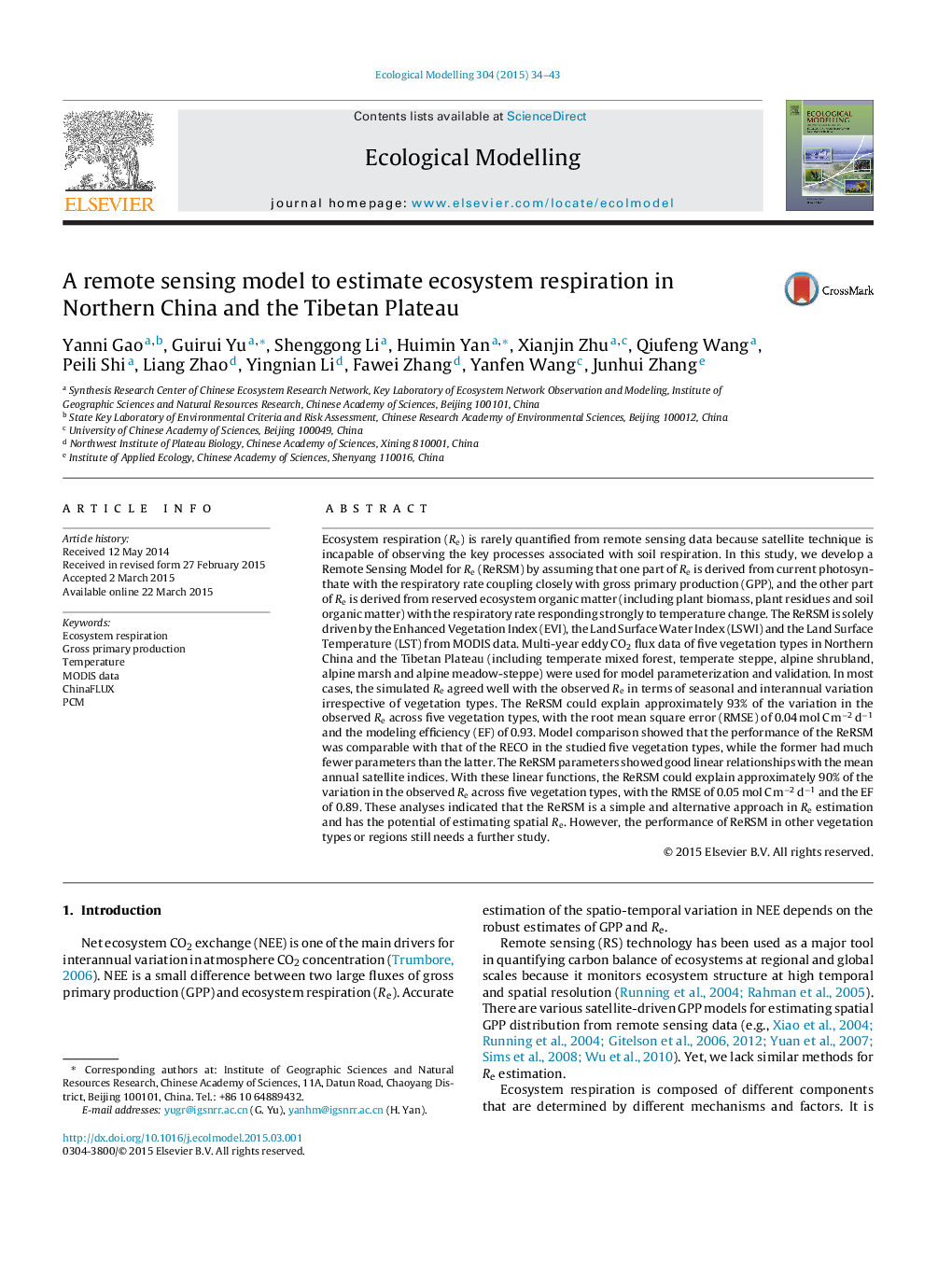| Article ID | Journal | Published Year | Pages | File Type |
|---|---|---|---|---|
| 4375754 | Ecological Modelling | 2015 | 10 Pages |
Abstract
Ecosystem respiration (Re) is rarely quantified from remote sensing data because satellite technique is incapable of observing the key processes associated with soil respiration. In this study, we develop a Remote Sensing Model for Re (ReRSM) by assuming that one part of Re is derived from current photosynthate with the respiratory rate coupling closely with gross primary production (GPP), and the other part of Re is derived from reserved ecosystem organic matter (including plant biomass, plant residues and soil organic matter) with the respiratory rate responding strongly to temperature change. The ReRSM is solely driven by the Enhanced Vegetation Index (EVI), the Land Surface Water Index (LSWI) and the Land Surface Temperature (LST) from MODIS data. Multi-year eddy CO2 flux data of five vegetation types in Northern China and the Tibetan Plateau (including temperate mixed forest, temperate steppe, alpine shrubland, alpine marsh and alpine meadow-steppe) were used for model parameterization and validation. In most cases, the simulated Re agreed well with the observed Re in terms of seasonal and interannual variation irrespective of vegetation types. The ReRSM could explain approximately 93% of the variation in the observed Re across five vegetation types, with the root mean square error (RMSE) of 0.04 mol C mâ2 dâ1 and the modeling efficiency (EF) of 0.93. Model comparison showed that the performance of the ReRSM was comparable with that of the RECO in the studied five vegetation types, while the former had much fewer parameters than the latter. The ReRSM parameters showed good linear relationships with the mean annual satellite indices. With these linear functions, the ReRSM could explain approximately 90% of the variation in the observed Re across five vegetation types, with the RMSE of 0.05 mol C mâ2 dâ1 and the EF of 0.89. These analyses indicated that the ReRSM is a simple and alternative approach in Re estimation and has the potential of estimating spatial Re. However, the performance of ReRSM in other vegetation types or regions still needs a further study.
Related Topics
Life Sciences
Agricultural and Biological Sciences
Ecology, Evolution, Behavior and Systematics
Authors
Yanni Gao, Guirui Yu, Shenggong Li, Huimin Yan, Xianjin Zhu, Qiufeng Wang, Peili Shi, Liang Zhao, Yingnian Li, Fawei Zhang, Yanfen Wang, Junhui Zhang,
